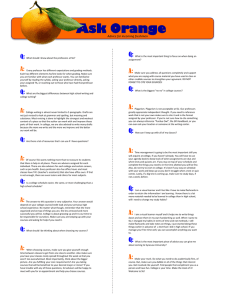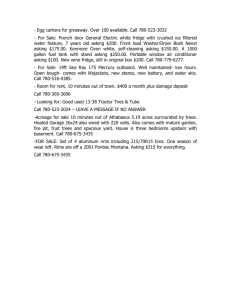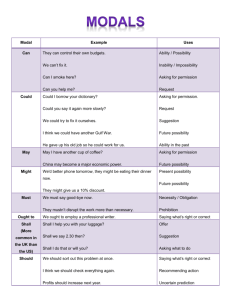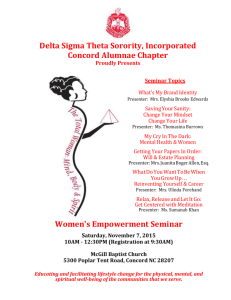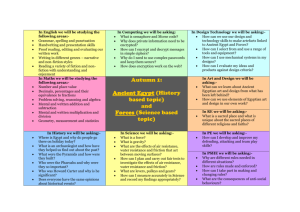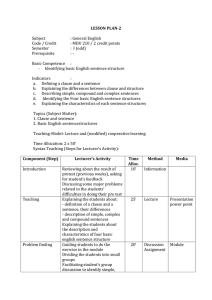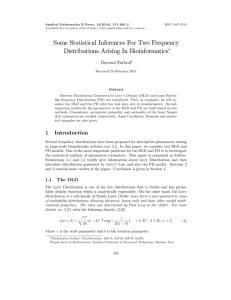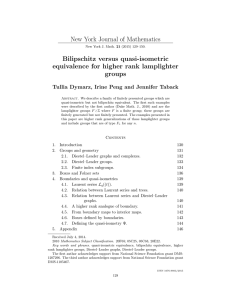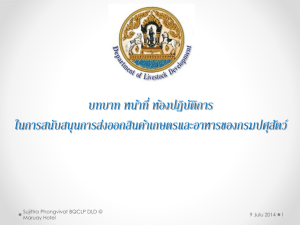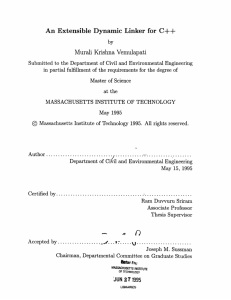AUG DLD Sec Social Studies Plan
advertisement
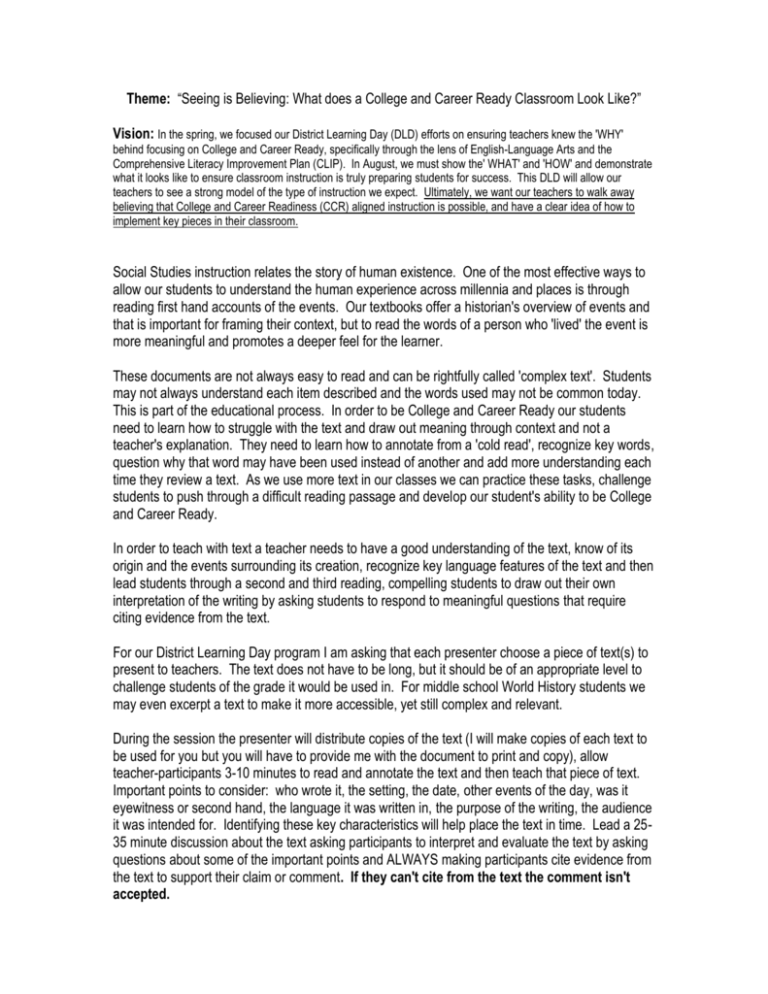
Theme: “Seeing is Believing: What does a College and Career Ready Classroom Look Like?” Vision: In the spring, we focused our District Learning Day (DLD) efforts on ensuring teachers knew the 'WHY' behind focusing on College and Career Ready, specifically through the lens of English-Language Arts and the Comprehensive Literacy Improvement Plan (CLIP). In August, we must show the' WHAT' and 'HOW' and demonstrate what it looks like to ensure classroom instruction is truly preparing students for success. This DLD will allow our teachers to see a strong model of the type of instruction we expect. Ultimately, we want our teachers to walk away believing that College and Career Readiness (CCR) aligned instruction is possible, and have a clear idea of how to implement key pieces in their classroom. Social Studies instruction relates the story of human existence. One of the most effective ways to allow our students to understand the human experience across millennia and places is through reading first hand accounts of the events. Our textbooks offer a historian's overview of events and that is important for framing their context, but to read the words of a person who 'lived' the event is more meaningful and promotes a deeper feel for the learner. These documents are not always easy to read and can be rightfully called 'complex text'. Students may not always understand each item described and the words used may not be common today. This is part of the educational process. In order to be College and Career Ready our students need to learn how to struggle with the text and draw out meaning through context and not a teacher's explanation. They need to learn how to annotate from a 'cold read', recognize key words, question why that word may have been used instead of another and add more understanding each time they review a text. As we use more text in our classes we can practice these tasks, challenge students to push through a difficult reading passage and develop our student's ability to be College and Career Ready. In order to teach with text a teacher needs to have a good understanding of the text, know of its origin and the events surrounding its creation, recognize key language features of the text and then lead students through a second and third reading, compelling students to draw out their own interpretation of the writing by asking students to respond to meaningful questions that require citing evidence from the text. For our District Learning Day program I am asking that each presenter choose a piece of text(s) to present to teachers. The text does not have to be long, but it should be of an appropriate level to challenge students of the grade it would be used in. For middle school World History students we may even excerpt a text to make it more accessible, yet still complex and relevant. During the session the presenter will distribute copies of the text (I will make copies of each text to be used for you but you will have to provide me with the document to print and copy), allow teacher-participants 3-10 minutes to read and annotate the text and then teach that piece of text. Important points to consider: who wrote it, the setting, the date, other events of the day, was it eyewitness or second hand, the language it was written in, the purpose of the writing, the audience it was intended for. Identifying these key characteristics will help place the text in time. Lead a 2535 minute discussion about the text asking participants to interpret and evaluate the text by asking questions about some of the important points and ALWAYS making participants cite evidence from the text to support their claim or comment. If they can't cite from the text the comment isn't accepted. Using the Question Construction documents that will be provided do the following: Question construction #1 - After the discussion regarding the text teachers should be allowed 4-5 minutes to construct a multiple choice question regarding the text. This question should ask for someone answering it to make an inference regarding the text and not simply be a question where the answer can be found written directly in the text. Discuss one or two of the questions and allow participants to offer feedback or determine if they can be improved in any way. Question construction #2 - After the multiple choice question has been completed participants should be allowed 4-5 minutes to construct an extended response question that calls for a written answer to address the question. This question should call for evidence to be cited and explained in order to complete the task. Once again, take a few minutes to discuss one or two questions and see if they can be improved. Both questions should be written on the question documents that will be provided and will serve as an exit ticket for the session. The piece of text and several accompanying questions will then be reviewed, posted and available for teachers to refer back to during their own classroom instruction. It is recommended that each presenter have an example of each type of question to share or model with if needed. Documents to be presented: Benjamin Banneker's letter to Thomas Jefferson Washington's Farewell Address Emancipation Proclamation The Atlanta Compromise speech Southern Manifesto Letter from a Birmingham Jail The Gospel of Wealth Hammurabi's Code The Treaty of Versailles Civil War letters from both North and South Declaration of the Rights of Man An excerpt from Naked Economics Stock charts, quotes and data sheets Economics article from Inside the Vault World War II letters I will also probably do one for 7th grade as we seem short on that grade, perhaps 95 Theses
